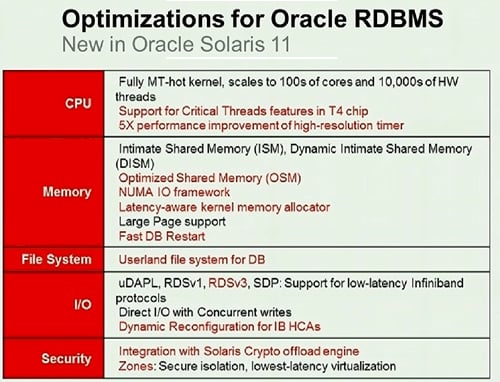
Astrolabe Cultists Nukes Science and History
No good deed goes unpunished. What is a "labe", anyway? Who is the Astro?
How Network Management Systems Keep Time
At the core of every network management system is a critical component: time. ICMP and SNMP Polls are sent out according to a standard time interval. SNMP Traps are received on time intervals. Threshold crossings occur on certain time intervals. Reporting of these results, across timezones spanning a globe is quite complex.
If you have an alert in India, how do you know what the offset is from the reporting location? How does a web browser know the time offset from the web server location? When did the Daylight Savings Time change occur under President G.W. Bush across the various timezones in the United States? When a nation or city changes it's name - how does one know what time it is [before and after the name change] in those locations, in relation to the rest of the world?
Well, all of these political and geographic adjustments are kept in a timezone database.
A Short History of Time
It may be hard to wrap one's brain around why astrological cultists sued a coder who wrote software and key-punch operator who inserted information compiled from worldwide sources into a community database, free of charge, for decades of their life.
The timezone database dates back to at least November 24, 1986. As political changes occur, new versions of the database were published several times a year.
About 10 years later, Astrolabe advised Astro Computing Services on a Windows 3.1 PC user interface related to astrology, latitude, longitude, and timezones. (Microsoft Window 3.1 was released during March of 1992.) Astrolabe bought distribution rights to the ACS Windows 3.1 PC Atlas in 2008, which contains astrology information.
The Internet Engineering Task Force started the transition of the timezone database to international standards bodies on January 27, 2011. Arthur David Olston planned to retire from his unpaid position in managing the timezone database according to a post on slashdot on March 6, 2011.
Cultists at Astrolabe sent a letter to the retiring Arthur David Olston to take down the database from a U.S. government web site around May of 2011 (ironically, Astrolabe is unsure of the exact date, as per their court filing.) The cultist trolls at Astrolabe then filed a personal law suit against the retiring timezone keeper and the person who inserts new data into the database on September 30, 2011.
The mailing list was shut down on October 6, 2011. The FTP site, which contained information compiled by the community who participated in the mailing list was also shut down. Global systems with automated FTP accesses are now broken.
The open community reference for worldwide timezone information has been nuked. Clearly, this group who bought rights to a Windows 3.1 astrology program is little more than a useless copyright troll.
What Was Nuked: OUR Timezone History
Arthur David Olson, who wrote the code to parse the timezone database, has not earned a dime from his years of ongoing research and creation of the systematic timezone database that nearly all systems use world-wide - yet the cultists at Astrolabe are filing law suits against him, personally???
Paul Eggert, the contributor who made the "uniform naming convention" of [region]/[city] is also named personally in the law suit. He is the person who makes new changes to the database, as they are discovered world-wide from various political changes. How odd is suing an individual, who is making additions to a database???
To give you an understanding as to the scholarship of these individuals, one must read this from Jon Udell. There were many contributors to this database - the notes truly compose an interesting literary work, which goes back to the explanation of how and why time is accounted for today. For example, the blog included this particular quote from the nuked time database:
Erasing decades of history and shooting old people and keypunch operators, who are also scholars in their own right, are not ways for cultists to win converts.From Paul Eggert (2001-05-30):
Howse writes that Alaska switched from the Julian to the Gregorian calendar, and from east-of-GMT to west-of-GMT days, when the US bought it from Russia. This was on 1867-10-18, a Friday; the previous day was 1867-10-06 Julian, also a Friday. Include only the time zone part of this transition, ignoring the switch from Julian to Gregorian, since we can’t represent the Julian calendar.As far as we know, none of the exact locations mentioned below were permanently inhabited in 1867 by anyone using either calendar. (Yakutat was colonized by the Russians in 1799, but the settlement was destroyed in 1805 by a Yakutat-kon war party.) However, there were nearby inhabitants in some cases and for our purposes perhaps it’s best to simply use the official transition.
Call to Inquire of Purchase
If you need a timezone database, you should inquire if they have a substitute that adheres to the global TZ database standard for your software or operating system. If they don't offer a product for your operating system or adhering to the standard format, then tell them to get with the program.
Eastern Sales/Information: 1 (800) 843-6682
One can't definitively determine what "Eastern" time is, as labeled in their contact information page, since they nuked the timezone database. But one could always ask how they expect people to know what timezone they are in when their lawsuit was personally responsible for the removal of the timezone database from the internet.
Tech Support/Business Line: 1 (508) 896-5081
Hours 11am - 4pm
Hours 9:30am - 5:30pm
Eastern Fax: 1 (508) 896-5289
Snail Mail: Astrolabe Inc.
PO Box 1750
Brewster, MA 02631 USA
Some emails of interest.
Director of Marketing: Madalyn Hillis-Dineen
Technical Support: Support@alabe.com
Order questions: orders@alabe.com
Sales and nonTechnical questions: astrolabe@alabe.com
Webmaster: webmaster@alabe.com














